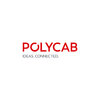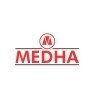Filter interviews by
Motherson Sumi Wiring Design and Product Development Engineer Interview Questions and Answers
Motherson Sumi Wiring Design and Product Development Engineer Interview Experiences
1 interview found
Design and Product Development Engineer Interview Questions & Answers
posted on 9 Apr 2024
I applied via Naukri.com and was interviewed before Apr 2023. There was 1 interview round.
(1 Question)
- Q1. 1. What is zener diode. 2. If you belongs to wiring harness so interviewer will ask about wiring harness. 3. What is relay and use. 4. What is fuse and its type. 5. What is PPAP,DFM and DFMEA.
- Ans.
A zener diode is a type of diode that allows current to flow in the forward direction like a normal diode, but also in the reverse direction when the voltage reaches a certain threshold.
Zener diodes are commonly used for voltage regulation and overvoltage protection in electronic circuits.
They have a specific breakdown voltage, known as the zener voltage, at which they start conducting in the reverse direction.
Zener di...
Interview Preparation Tips
- Power Electronics
- Electrical Machines
- Electrical Power System
Top trending discussions






Interview questions from similar companies

I applied via Approached by Company and was interviewed before Dec 2021. There were 3 interview rounds.

Logical reasoning, verbal reasoning and reading comprehension
Concept of what will you do if you become pm of india
Interview Preparation Tips

Production Engineer Interview Questions & Answers
Finolex Cablesposted on 23 Nov 2017
I appeared for an interview in Jun 2017.
Interview Questionnaire
3 Questions
- Q1. Personal detail
- Q2. About career
- Q3. About project
Interview Preparation Tips
Experience: I was telled my personal detail and about my career
Tips: My career
Round: Technical Interview
Experience: I was disscused about my project
Tips: My project

I applied via Campus Placement and was interviewed before Jun 2020. There were 3 interview rounds.
Interview Questionnaire
1 Question
- Q1. Tell me about yourself, what are your weakness, what are your goals, and also they asked electrical related questions . Electrical questions are from basic.
Interview Preparation Tips

Interview Questionnaire
3 Questions
- Q1. About Brazing process.
- Q2. Line balancing
- Q3. Man power handling

I applied via Approached by Company and was interviewed in Sep 2023. There were 3 interview rounds.

Education related Questions Asked
(4 Questions)
- Q1. How many types of gates? ,And its truth tables
- Ans.
There are seven basic types of logic gates: AND, OR, NOT, NAND, NOR, XOR, and XNOR.
AND gate: output is high only if all inputs are high
OR gate: output is high if any input is high
NOT gate: output is the inverse of the input
NAND gate: output is low only if all inputs are high
NOR gate: output is low if any input is high
XOR gate: output is high if inputs are different
XNOR gate: output is high if inputs are the same
- Q2. Electronic and Electrical related types questions
- Q3. About to himself?
- Q4. Questions paper
Interview Preparation Tips

(2 Questions)
- Q1. What is the MCCB
- Ans.
MCCB stands for Molded Case Circuit Breaker, a type of electrical protection device.
MCCBs are used to protect electrical circuits from overloads and short circuits.
They have adjustable trip settings for different levels of protection.
Commonly used in industrial and commercial applications.
Examples include Siemens, Schneider Electric, and ABB MCCBs.
- Q2. What is the Panel size
- Ans.
The panel size refers to the dimensions of the control panel used in the production process.
Panel size can vary depending on the specific equipment and machinery being used.
Common panel sizes include 24x24 inches, 36x36 inches, and 48x48 inches.
Panel size is important for determining the layout and placement of components within the control panel.
Panel size may also impact the overall footprint of the production equipm

I applied via Campus Placement
Interview Questionnaire
1 Question
- Q1. F P I REALLY where is use
- Ans.
FPI (Floating Point Interpolation) is used in computer graphics to smooth out curves and edges.
FPI is a mathematical algorithm used to interpolate values between two points.
It is commonly used in computer graphics to create smooth curves and edges.
FPI is also used in audio processing to interpolate between samples.
Examples of FPI in action include anti-aliasing, texture mapping, and image resizing.
Interview Preparation Tips

I applied via Campus Placement and was interviewed in Dec 2021. There were 4 interview rounds.
Interview Questionnaire
1 Question
- Q1. What is FSH and where is this used
- Ans. In cable for fire resistance.
Interview Preparation Tips

Production Engineer Interview Questions & Answers
CG Power and Industrial Solutionsposted on 24 Mar 2023

(2 Questions)
- Q1. Previous experience about work
- Ans.
I have 3 years of experience working as a Production Engineer in a manufacturing company.
Managed production processes and ensured smooth operations
Implemented lean manufacturing principles to improve efficiency
Collaborated with cross-functional teams to troubleshoot and resolve production issues
Developed and implemented preventive maintenance programs
Analyzed production data to identify areas for improvement
Led a team ...
- Q2. Details About college project.
Interview Preparation Tips
Motherson Sumi Wiring Interview FAQs
Tell us how to improve this page.
Motherson Sumi Wiring Interviews By Designations
- Motherson Sumi Wiring Production Engineer Interview Questions
- Motherson Sumi Wiring Senior Engineer Interview Questions
- Motherson Sumi Wiring Mechanical Maintenance Engineer Interview Questions
- Motherson Sumi Wiring Section Manager Interview Questions
- Motherson Sumi Wiring ITI Electrician Interview Questions
- Motherson Sumi Wiring Quality Engineer Interview Questions
- Motherson Sumi Wiring Senior Quality Engineer Interview Questions
- Motherson Sumi Wiring Mechanical Engineer Interview Questions
- Show more
Interview Questions for Popular Designations
- Research and Development Interview Questions
- Product Development Engineer Interview Questions
- Design & Development Engineer Interview Questions
- new Product Development Engineer Interview Questions
- Design Engineer Interview Questions
- Business Development Executive Interview Questions
- Business Development Manager Interview Questions
- Business Development Associate Interview Questions
- Show more
Motherson Sumi Wiring Design and Product Development Engineer Interview Process
based on 1 interview
Interview experience
Interview Questions from Similar Companies
Fast track your campus placements
|
Engineer
273
salaries
| ₹1.5 L/yr - ₹5.8 L/yr |
|
Assistant Engineer
196
salaries
| ₹1.5 L/yr - ₹4.2 L/yr |
|
Senior Engineer
179
salaries
| ₹4 L/yr - ₹7.5 L/yr |
|
Production Engineer
165
salaries
| ₹2.4 L/yr - ₹6.2 L/yr |
|
Assistant Manager
137
salaries
| ₹5.3 L/yr - ₹11.3 L/yr |

Havells

BHEL

Polycab Wires

CG Power and Industrial Solutions
- Home >
- Interviews >
- Motherson Sumi Wiring Interview Questions >
- Motherson Sumi Wiring Design and Product Development Engineer Interview Questions









